Tag
#php
A command injection vulnerability in Artica Proxy appliance versions 4.50 and 4.40 allows remote attackers to run arbitrary commands via an unauthenticated HTTP request. The Artica Proxy administrative web application will deserialize arbitrary PHP objects supplied by unauthenticated users and subsequently enable code execution as the www-data user.
Insurance Management System PHP and MySQL version 1.0 suffers from multiple persistent cross site scripting vulnerabilities.
Craft CMS version 4.4.14 suffers from an unauthenticated remote code execution vulnerability.
Orange Station version 1.0 suffers from a remote shell upload vulnerability.
### Summary The `email` field in phpMyFAQ's user control panel page is vulnerable to stored XSS attacks due to the inadequacy of PHP's `FILTER_VALIDATE_EMAIL` function, which only validates the email format, not its content. This vulnerability enables an attacker to execute arbitrary client-side JavaScript within the context of another user's phpMyFAQ session. ### Details Despite using PHP's `FILTER_VALIDATE_EMAIL` function, the email field does not adequately validate the content of the email address. This means that malicious input, such as JavaScript code, can be accepted and stored in the database without being detected. When the stored data is retrieved and displayed on web pages, it is not properly sanitized to remove or neutralize any potentially harmful content, such as JavaScript code which leads to Stored XSS. ### PoC 1. Login as any user, go to the user control panel, change email to any valid email and intercept the request. 2. Modify the request’s email parameter to t...
### Summary The category image upload function in phpmyfaq is vulnerable to manipulation of the `Content-type` and `lang` parameters, allowing attackers to upload malicious files with a .php extension, potentially leading to remote code execution (RCE) on the system. ### Details In the file upload function of the category image, the `Content-type` can be manipulated to return an empty string for the extension and the `lang` parameter can be set to `.php.` to allow an attacker to save a file as `.PHP`. This allows the uploading of web shells which could lead to RCE on phpmyfaq. ### PoC 1. Generate a fake .GIF file that contains a php command using the tool `gifsicle` a. Cmd: `gifsicle < test1.gif --comment "<?php system('whoami'); ?>" > output.php.gif`  b. The contents of the file should look like this: %3c%2fscript%3e` 2. Browse to the particular news page and the XSS should pop up. 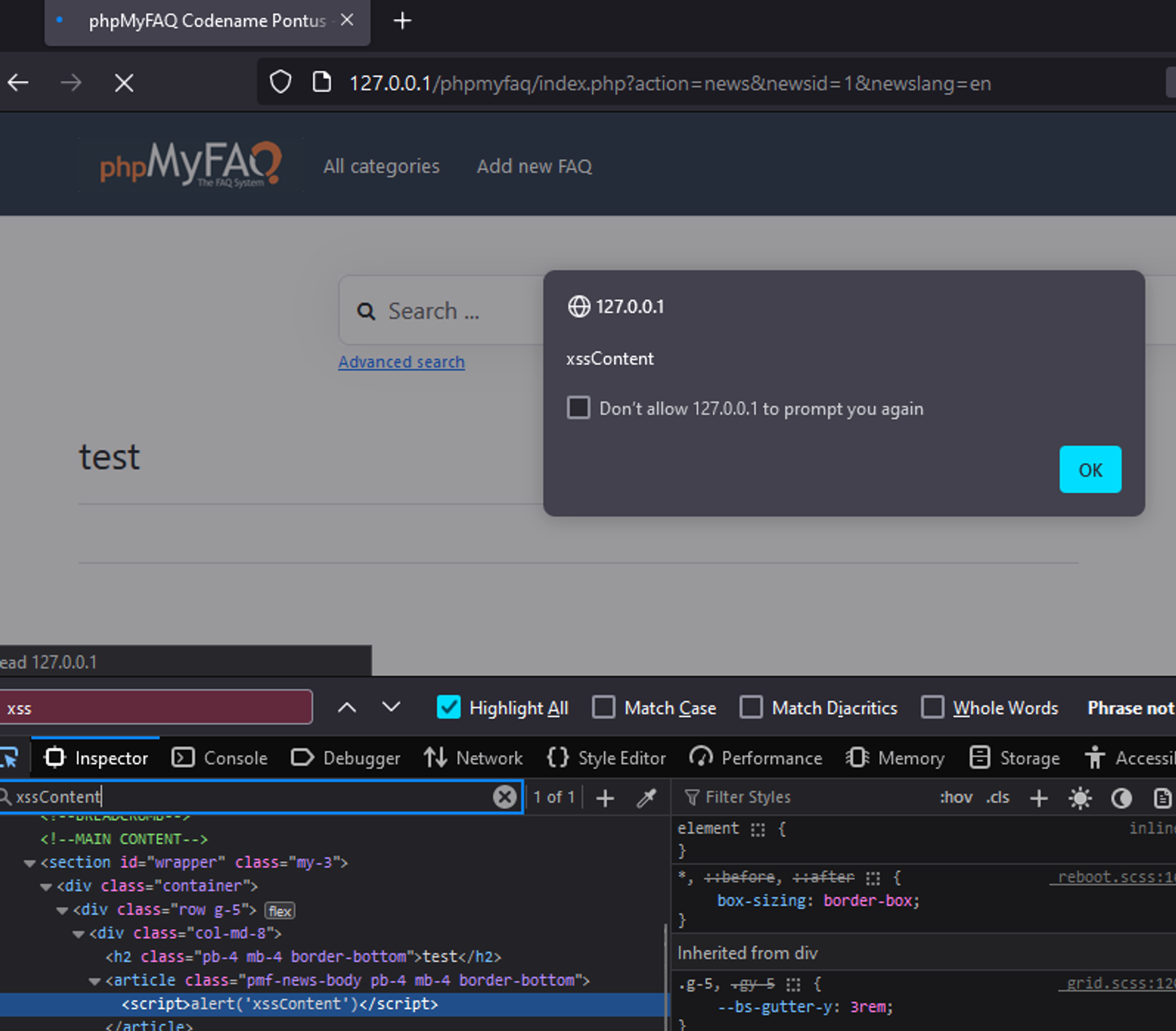 ### Impact This allows an attacker to execute arbitrary client side JavaScript within the context of another user's phpMyFAQ session
### Summary A SQL injection vulnerability has been discovered in the `insertentry` & `saveentry` when modifying records due to improper escaping of the email address. This allows any authenticated user with the rights to add/edit FAQ news to exploit this vulnerability to exfiltrate data, take over accounts and in some cases, even achieve RCE. ### PoC 1 - SQL Injection at insertentry: 1. Browse to “/admin/?action=editentry”, edit record and save. Intercept the POST request to "/admin/?action=insertentry" and modify the email and notes parameters in the body to the payloads below: a. `email=test'/*@email.com` b. `notes=*/,1,1,1,1,null,1);select+pg_sleep(5)--` 2. Send the request and notice the `pg_sleep(5)` command is executed with a time delay of 5 seconds in the response. This verifies that the SQL injection vulnerability exists. 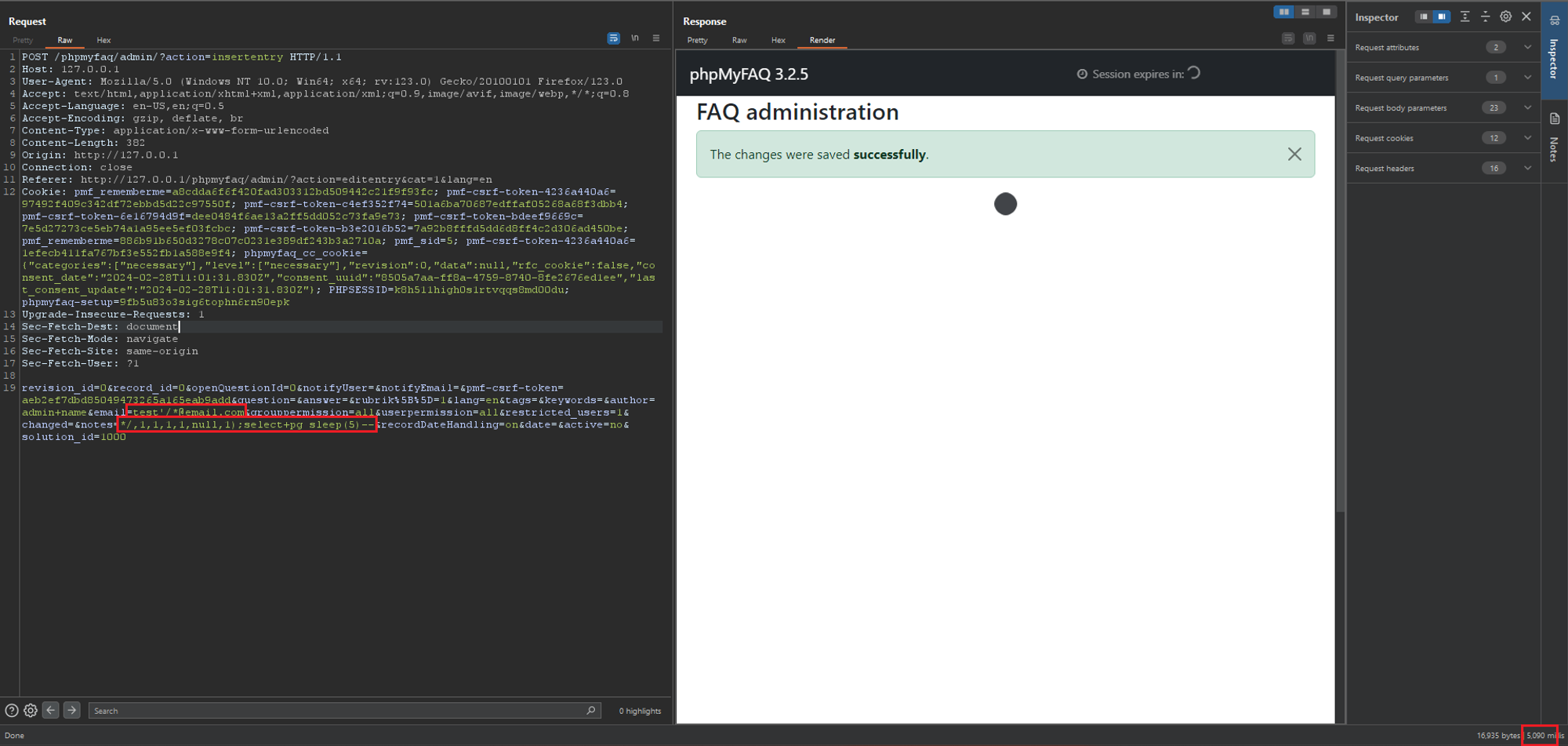 ### PoC 2 - SQL Injection at saveentry 1....
### Summary Due to insufficient validation on the `contentLink` parameter, it is possible for unauthenticated users to inject HTML code to the page which might affect other users. _Also, requires that adding new FAQs is allowed for guests and that the admin doesn't check the content of a newly added FAQ._ ### PoC 1. Browse to ../phpmyfaq/index.php?action=add&cat=0 , enter `https://test.com?p=<h1>HTML_INJECTION</h1>` for the contentLink parameter. 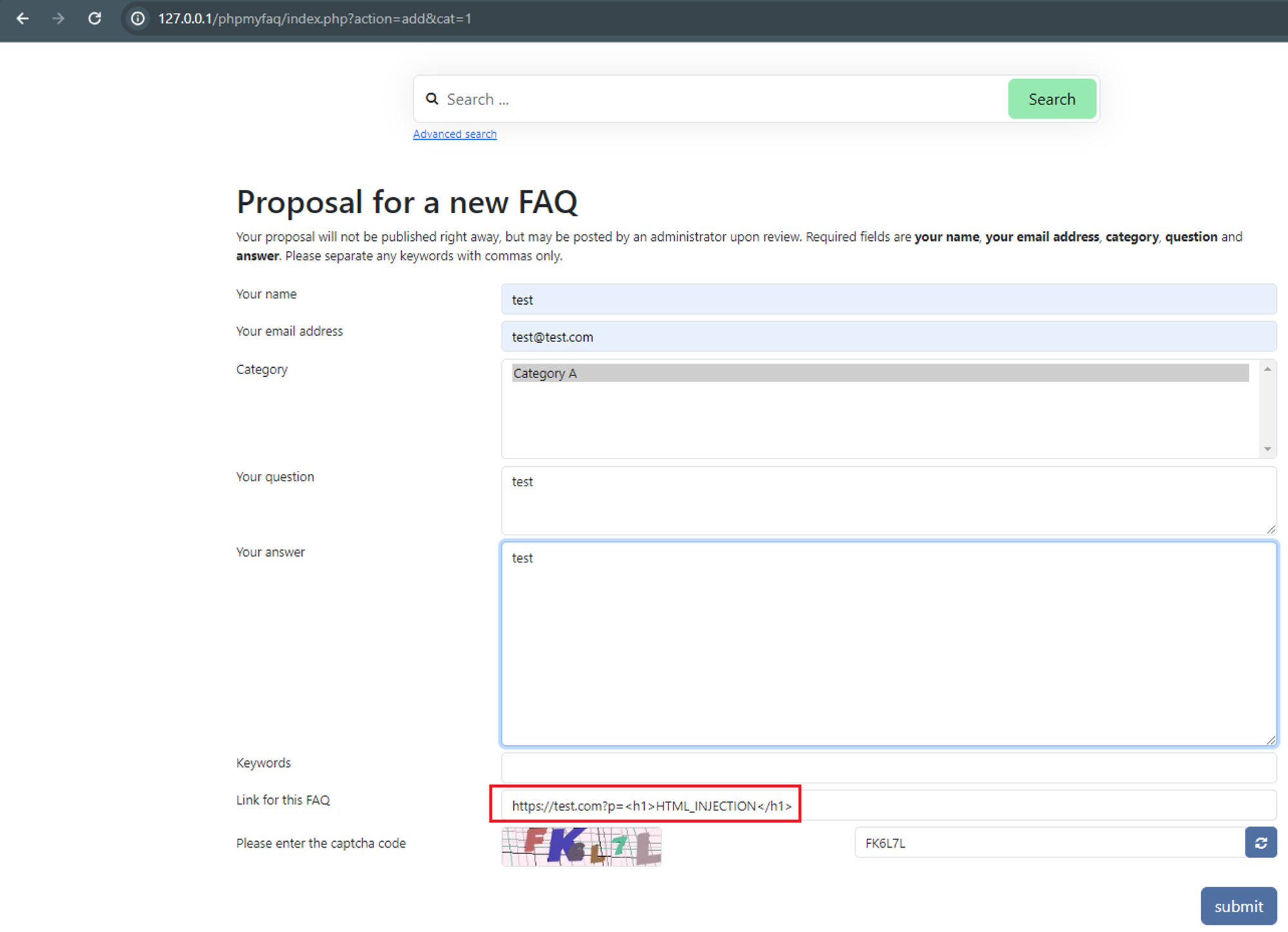 2. Verify the HTML injection by viewing the FAQ itself, “All categories” → “CategoryName” → ”QuestionName”. 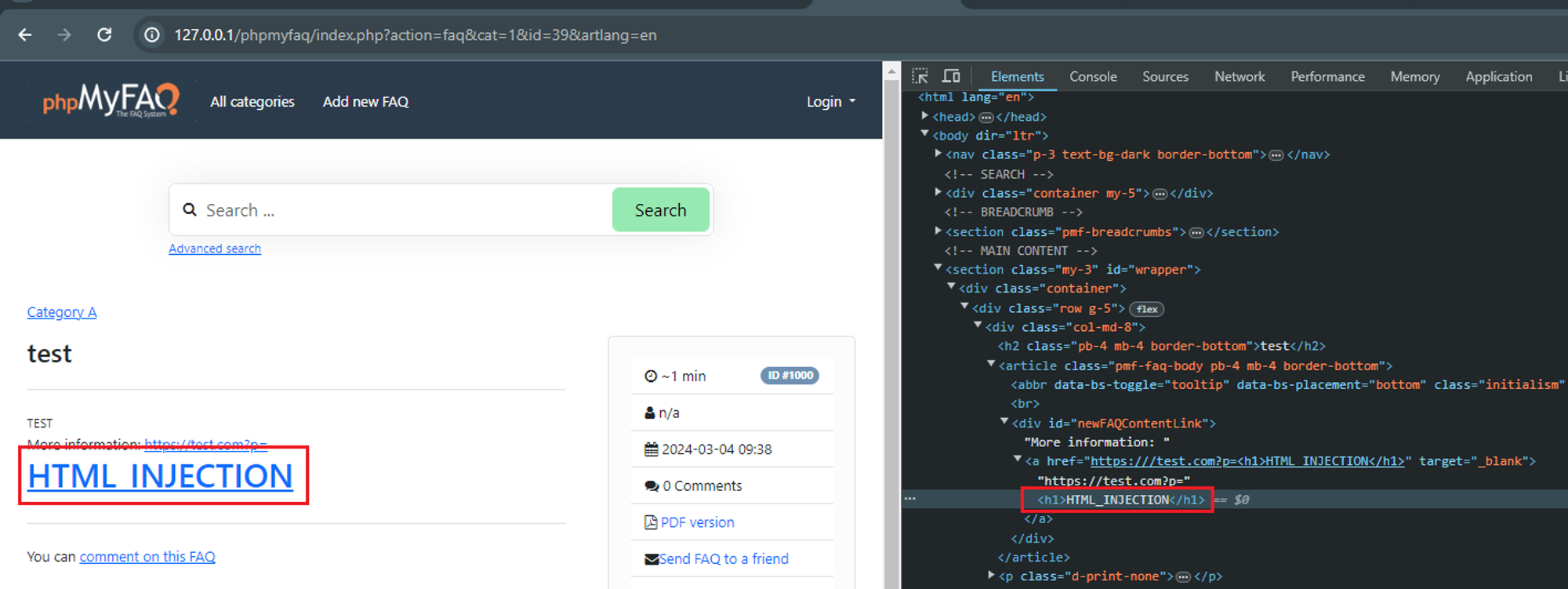 ### Impact Attackers can manipulate the appearance and functionality of web pages by injecting malicious HTML code. This can lead to various undesirable outcomes, such as defacing the website, redirecting users to malicious sites, or alte...
### Summary An attacker with admin privileges can upload an attachment containing JS code without extension and the application will render it as HTML which allows for XSS attacks. ### Details When attachments are uploaded without an extension, the application renders it as HTML by default. Therefore allowing attackers to upload .html files containing javascript code to perform XSS attacks. The direct file path to the uploaded attachment is also easily obtainable as it is made up of substrings of the file's MD5 hashes. ### PoC 1. Admin users can upload attachments containing XSS payloads in files without extensions to bypass the .html extension check. 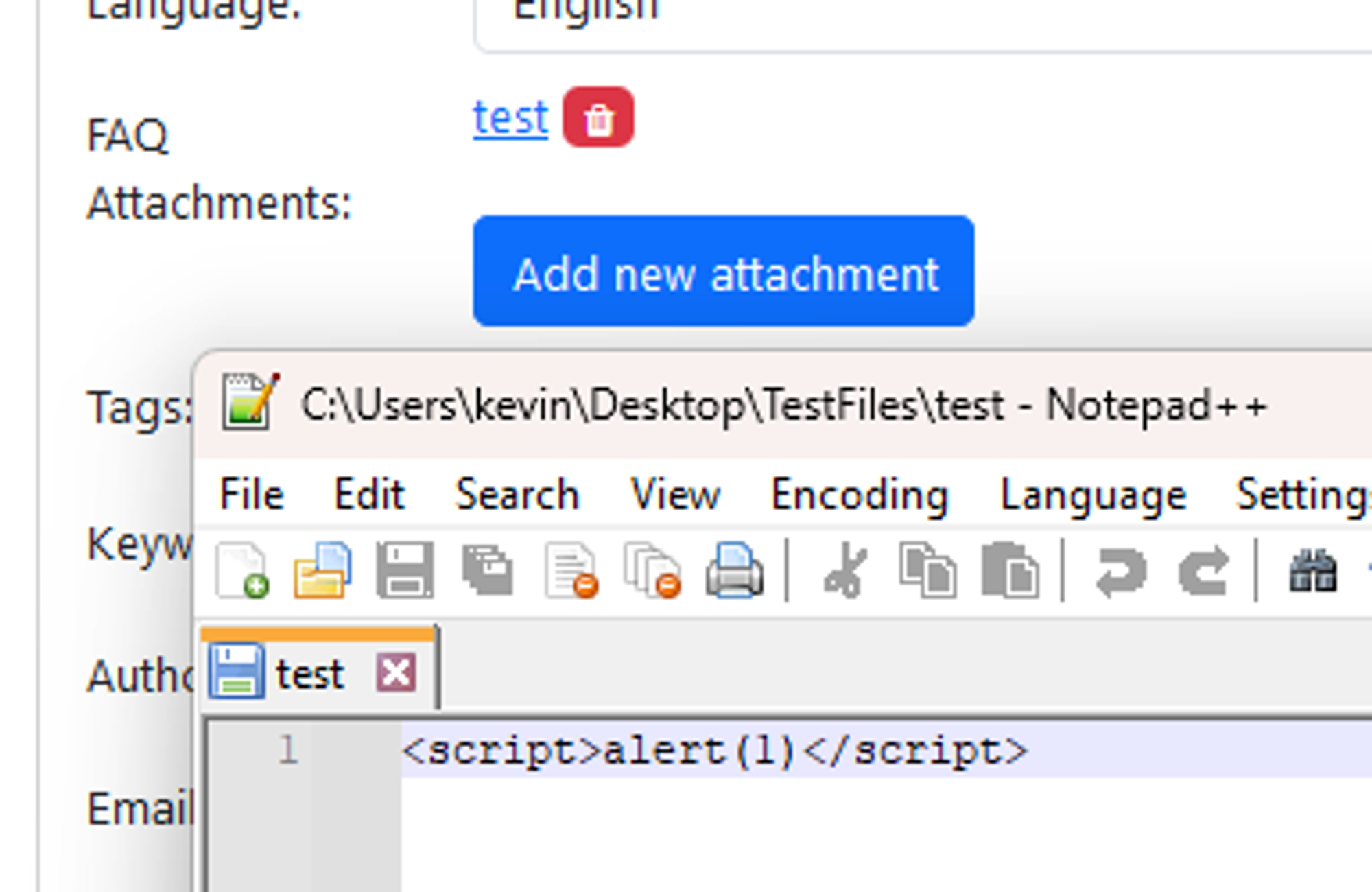 2. Since the path of the uploaded file is built entirely on the file’s MD5 hash and the attachment directory, it is possible for an attacker to know the direct path of the uploaded file. E.g file MD5 hash: 38fff51cb7248a06d6142c6bdf84...